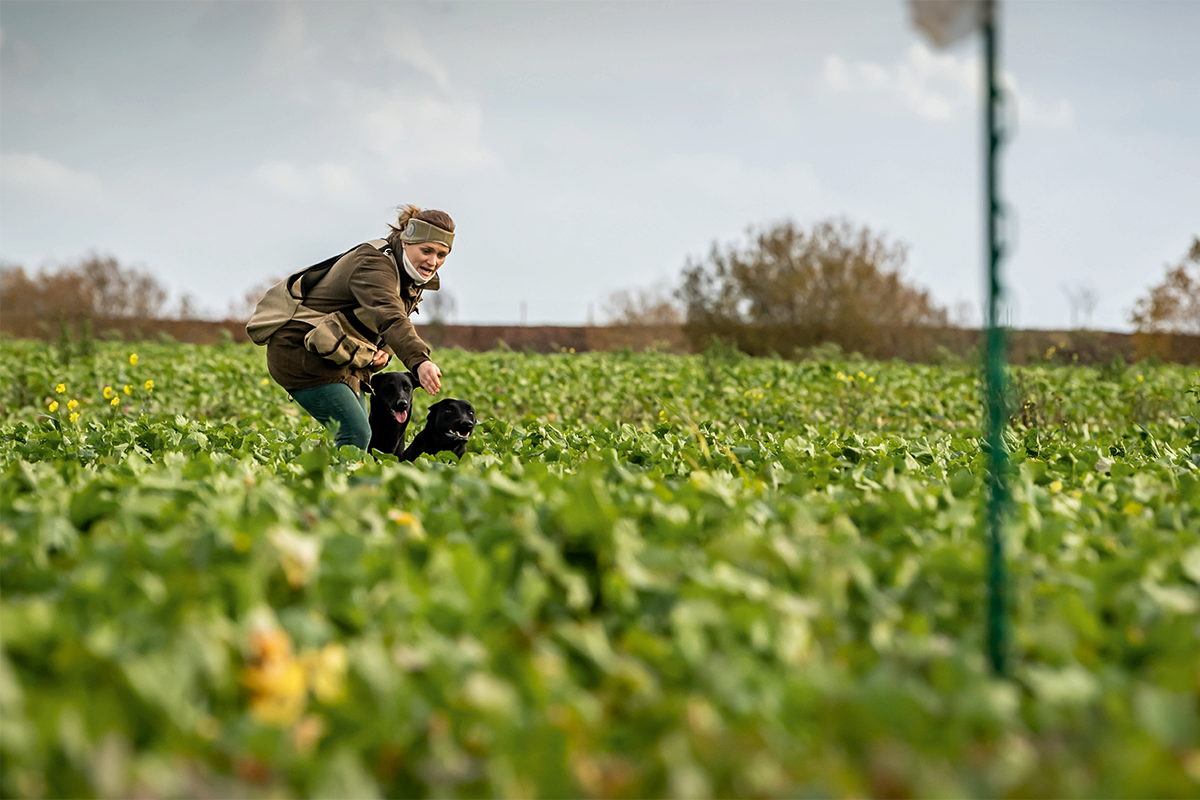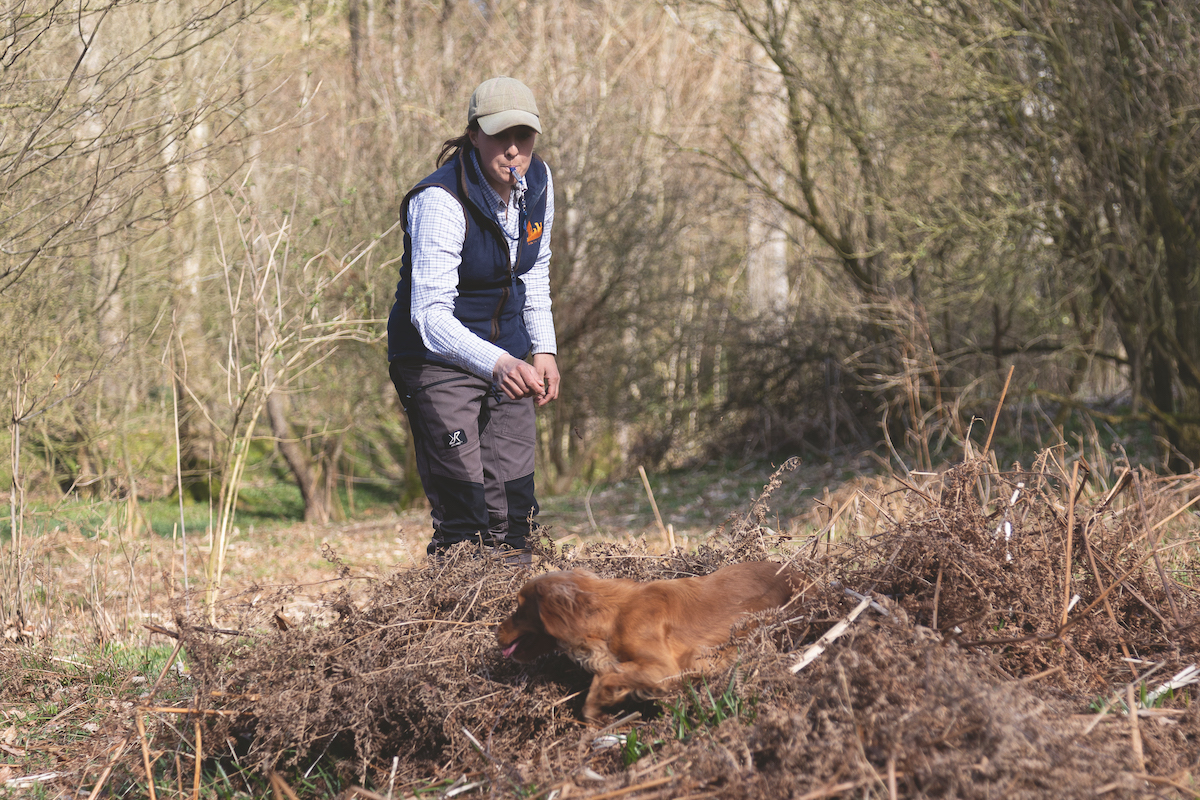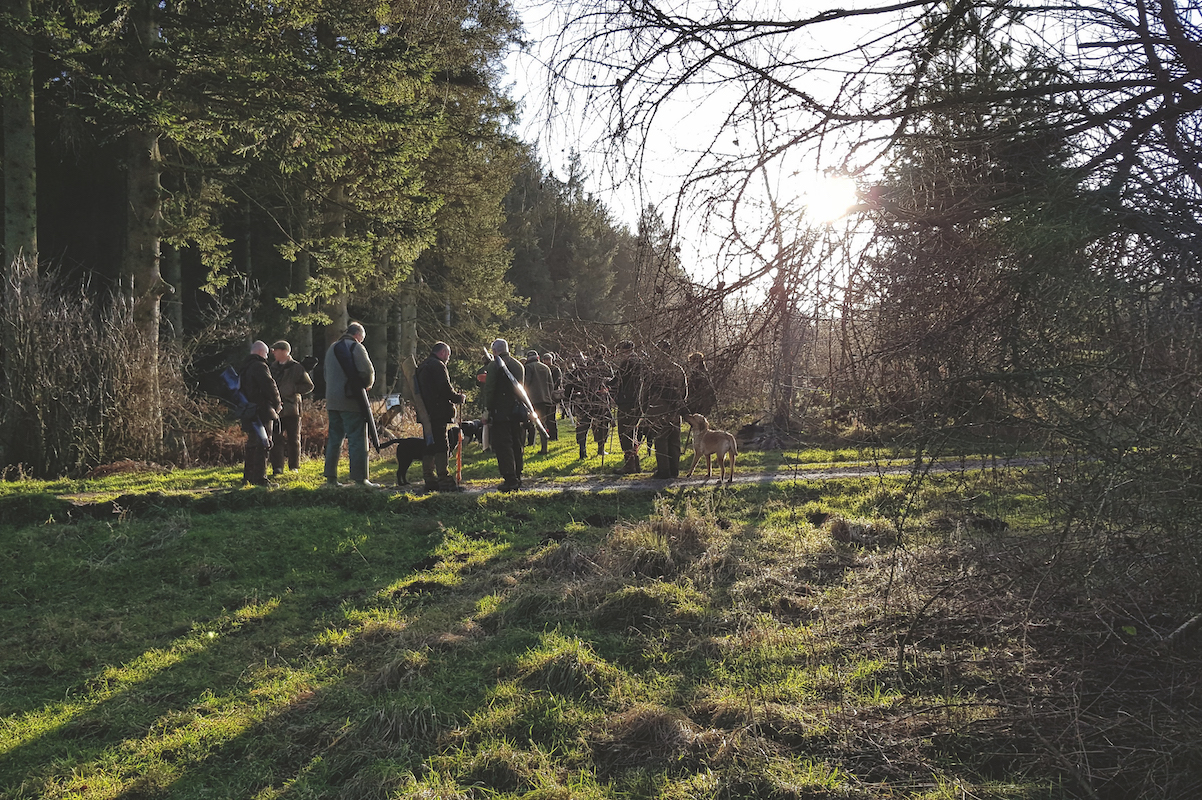Training young gundogs – getting the first season right
All dogs learn at different paces, and it’s important not to overface a young gundog during their first shooting season, advises Ellena Swift

All dogs learn at different paces, and it’s important not to overface a young gundog during their first shooting season, advises Ellena Swift
I am really pleased with how my young gundogs are coming on so far this season. They are showing that they are steady and quiet, and will pick game without issue. The best thing for them now is experience; they simply need miles on the clock. There is more to this than just taking them out shooting. While they do need exposure to shooting situations, more important is familiarising them in the right way. I am often asked how long it takes to train a dog. Put simply, they can only be trained at the pace they can learn at. Just like people, this will be individual to each dog.
It is a really bad idea to compare one young gundog with others just because they are a similar age. What some young gundogs find naturally easy, others will really struggle with and vice versa. If your dog has found one aspect of a shoot day fine and not struggled, then it is probably OK to stretch them a little further. If they do not take on something as you had hoped, ensure you work on this and improve it before you move on.
Begin with simple exposure to that environment. If the dog is working well in training and consistent at heel, recall, hunting and retrieving at home, then you can start testing
these skills on a shoot day. As a general rule, it is best to consider the dog’s first-ever season as a ‘learning’ season. They should at no point be genuinely relied on to work. This is a common mistake and one I often see ruining some very promising young gundogs. When a dog excels and shows promise, it is extremely easy to push them too hard too fast.
The most frequent outcome of this mistake is that the dog begins to make noise. While I do not deny a noisy dog can certainly be hereditary, more often than not it is the dog expressing frustration after being exposed to a situation they are not ready for. This is unfortunately a problem that is extremely hard to cure once started, and it often goes uncured for life.

Try to ensure you can see your novice dog’s retrieves, so you are aware of any issues
Small questions
On your dog’s first day, ask small questions that you know they can answer. For example, ask them to sit, get out of the car and sit by your side calmly. Then ask them to walk to heel and toilet. If you find the dog bombing off to greet people, or other dogs, and generally not focusing on you, work on these small things before you even consider asking them to work on the shoot itself.
A really good way to introduce young gundogs to the working environment is to ensure they have a nanny to guide and influence their behaviour. If you do not have a suitable older dog to use, pick a dog that you like — if the older dog behaves in the same way that you would like yours to eventually, then it is ideal. If the nanny dog has undesirable habits such as whining, running-in and swapping birds, then avoid.

A nanny dog can help to guide and influence a youngster’s behaviour
Allow the youngster to sit calmly alongside the other dog if picking-up or to walk to heel with the older one if beating. Quietly work the older dog around it, so they get used to the fact that not everything is for them and not every retrieve is theirs.
A big step for a picking-up or peg dog is learning to pick wounded game. Some of them take little to no introduction and simply do it. But for the vast majority, a slow introduction helps them develop the skills they need. It is critical that the correct retrieve is selected for a novice dog; the wrong one can put a dog off for life or create habits that will promptly end their career.
A common error is a novice dog being sent for a cock bird with only the tip of a wing gone. In the heat of the moment, a lively cock bird can put up a good fight and often spur the dog. This normally ends in one of two reactions; either the dog is put off in the future or it learns to bite the bird to stop it struggling. A hard-mouthed dog or one that refuses to pick game is no help to anyone.
Gentle introduction
When a bird is cleanly head shot, often they twitch with nerves. This means the bird is not going to fight or spur the dog but will be moving slightly as the dog picks it. This gives them the sensation of a live bird and a gentle introduction to picking wounded game.
Once they are comfortable with this, ask them to pick a wounded partridge. Being smaller, they are easier to hold. If the dog tries to put the bird down, mouth it at all or even grip it on delivery, make sure you improve, if not cure, these things before you introduce full live or wounded game. Try to ensure that any retrieves done by a novice dog mostly take place where you as a handler can watch them. This allows you to see if there are any issues.
Hunting cover and flushing game are things that both a beating dog and a picking-up dog should be used to and fully understand. In both cases, ideally the dog will simply carry on hunting and not chase the individual flushed bird. If you are in the beating line, you can request that you work your dog in a slightly quieter bit of cover where the dog will not be swamped with game. That way, you can take your time on each flush and ensure the dog gets it right.

A wounded partridge is a good way to introduce a youngster to injured game, as they are smaller than pheasants and therefore easier to hold
At this stage, they should be stopping on the whistle and hunting tight to you. If the dog has a few nice flushes, then try to finish on a good note.
It is easy to forget that, at home, a training session normally lasts one hour or a couple of hours maximum. We then expect the dog to be able to focus and work for a whole day with no preparation for the mental stamina needed. With this in mind, do not allow a novice dog to become tired and start making mistakes. If a novice dog has worked really well, I will often put them back in the truck for the rest of the day. I then gradually increase the amount of time they work over the course of several days out. It is much more pleasant to train a dog by saying ‘well done’ than constantly having to correct mistakes. If small enough steps are taken, then the dog should achieve each time it is stretched with minimal correcting.
Ignoring old scent
I have been working on delayed marks and running over (or learning to ignore) old scent. My youngsters normally train with a handful of dummies out at one time rather than lots of game on the floor on a shoot day. When I cast them out, often they get stuck on an old fall. I like that they are using their nose, but they need to learn to move on if it is an old fall and, more importantly, take instruction and move away if I handle them.
To train this, I use a remote dummy launcher. If you do not have one of these, a helper can throw out dummies instead. I launch four dummies all at the same time and allow the dogs to watch. I select which retrieve each dog takes. I then send a dog to an area where a dummy has already been picked but is actually in line with a remaining retrieve. I ask the dog to hang and count. I like my older dogs to work for a good few minutes before I intervene. Once they have hunted the empty area with old scent in, I do one of two things: recall them or ask for a stop. Either way, I then send them for the fourth and final retrieve, wherever that is in relation to where they are hunting.
Doing this exercise, the dog learns to keep working until they either pick or I intervene. Then they understand they are rewarded for listening, as they are guided on to the original dummy. Using these simple delayed marks helps the dogs build confidence in themselves, and also the confidence to listen to the handler.
Foundations
I see a lot of very good young gundogs ruined purely from being rushed. Everyone wants to move on to the retrieving and hunting aspects, but no one wants to keep covering the basics as they are slow and boring. A wise trainer once told me that training a dog is like building a house; if the foundations are not solid, at some point it will come crashing down.








